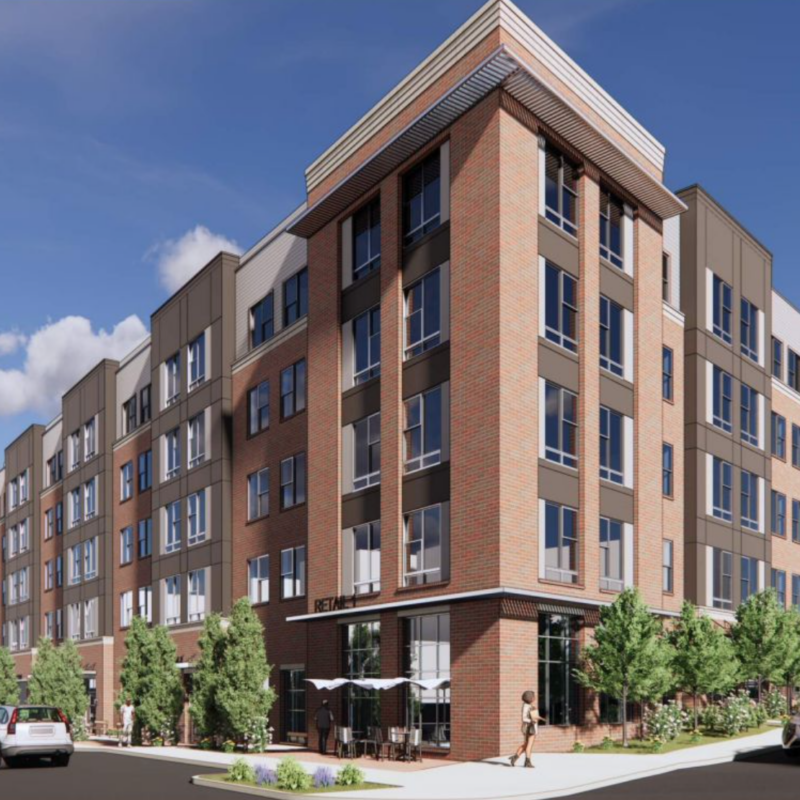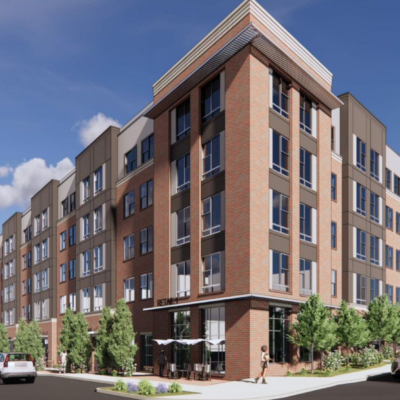When Mark Watson bought a new house on St. Charles Court in 2006, he knew that a sewer interceptor ran underneath the edge of the property. What he did not know was that a mistake in the site’s development would cost him and his neighbors the scenic stand of sycamores that buffers his property from Meadow Creek. He will have to exchange that view for one of a 42" pipeline.
“We’ve got hawk families in there, deer families in there,” says Watson. “Who knows what else. I don’t think almost anyone would have purchased the homes if we thought there was going to be an above ground, 42" sewer pipe sitting behind these houses. Most of us bought these houses because of these trees.”
|
Most families bought $350,000 homes at St. Charles Court without knowing a new sewer pipeline would take out the scenic grove buffering Meadow Creek. |
The Rivanna Water and Sewer Authority says that it’s time to replace the four-mile Meadow Creek Interceptor, which is running close to capacity and has cost at least $600,000 in the past five years for emergency repairs. For 70 percent of its length, the new, larger pipeline will follow the route of the old one.
But the alignment has to change at St. Charles Court. When Southland Homes developed the site, fill ended up covering much of the easement of the buried interceptor, according to RWSA. If the pipeline is excavated, the water authority says, it could disturb the foundation of the homes. So instead of taking out the existing pipeline, the woods buffering Meadow Creek will have to yield for the interceptor, which must run above ground because of its proximity to the creek.
“Why didn’t the city inspectors catch it while they were building?” asks Watson. “We all stand to lose a significant amount of value in our houses as well as all of the stream buffer because the development was built incorrectly.”
Southland Homes won approval from the city Planning Commission in 2003 for St. Charles Court as a 24-unit PUD—planned-unit development—on a steep site typical of the scant property left undeveloped in the city. A large retaining wall is required to hold up one side of the site.
Unsurprisingly, no one’s coming forward with a mea culpa. Southland Homes did not return multiple calls for comment. Both the city and RWSA say that it wouldn’t happen today, but can’t account for why the mistake got past their review.
Jim Tolbert, director of Neighborhood Development Services, says he does not know the details of the site’s review. “When the subdivision was submitted, there was no steep slope ordinance,” say Tolbert. “The fill they put in was legal.” Tolbert says it was reviewed by RWSA, but he doesn’t know what comments it made or whether they were followed.
RWSA Executive Director Tom Frederick says that his current staff can’t find a file that would provide information on the RWSA’s review of the plan. “I can only say that if a new site plan were submitted today to RWSA that included a proposal to place fill material within an RWSA easement, the plan would receive substantial review to assess if the fill would have an adverse effect on access, inspection, maintenance, repair, or replacement of the RWSA assets within the easement.”
Regardless of why it happened, Watson and his neighbors are trying to find a way to keep the trees or at least lessen the pipeline’s impact. On October 2, they met with RWSA and its consultant, Greeley and Hansen, to propose alternatives, all of which weren’t seen as feasible.
“The problem there is that when you’re sitting there with a bunch of engineers, they can say anything they want, and there’s no way for you to verify it unless you hire your own engineer,” says Watson, who has since enlisted the help of an engineer. “I’m thankful that they sat down with us, but we’re still going to go forward with some other options.”
“We are taking into account the comments that we received with that meeting,” says Frederick. He says that no changes will be made to the project until after a meeting with residents in the Greenbrier neighborhood on October 25. RWSA is also exploring ways to incentivize contractors to disturb as little land as possible, though that would probably increase the cost of the $24.5 million project.
Meanwhile, St. Charles Court residents have some leverage—RWSA has to obtain new easements for the property, which so far neighbors have refused—but Watson is aware that the agency could ultimately use eminent domain. Moreover, the neighborhood association is largely controlled by Southland Homes until it sells all of
the houses.
If nothing else, Watson hopes the city will dramatically reduce his tax bill with a reduced assessment. “We’re losing value in the market and they’re letting RWSA take that much more value away.”
C-VILLE welcomes news tips from readers. Send them to news@c-ville.com.





